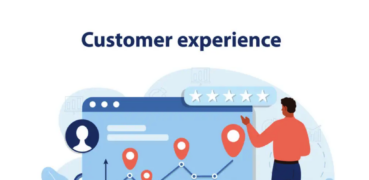Mastering Product Discovery by Risk: A Practical Guide for Product Owners

Effective product discovery involves understanding not only what customers need but also how to bring those solutions to market with minimized risk. The right discovery process doesn’t just shape great products; it also guides teams around potential pitfalls like unexpected technical challenges, user adoption issues, or shifts in market demand. Product discovery activities can be organized around risk types—desirability, viability, feasibility, and usability—allowing product owners to take a structured approach to addressing uncertainties before committing time and resources.
In this article, we’ll look at practical ways to conduct risk-oriented product discovery and how to implement these techniques effectively. By focusing on specific risk areas, product owners can make better-informed decisions and drive product success more efficiently.
1. Desirability Risks: Will Users Want It?
Desirability risk asks, “Will users want or need this product?” At its core, desirability is about understanding what motivates your users and whether your product or feature fits into their lives and workflows. Mitigating desirability risk requires gathering deep customer insights before committing to development.
Practical Techniques for Assessing Desirability:
- Customer Interviews: Interview current and potential customers to understand their pain points, motivations, and needs. Ask questions to gauge whether your product concept resonates and fits into their existing processes.
- Example: A team at Herdr.io might interview product managers and executives about their biggest pain points with existing project management tools. If they discover that these users struggle with clear reporting across projects, that insight can guide a feature around customizable, cross-project reporting.
- Job-to-be-Done (JTBD) Analysis: Identify what “job” customers are hiring your product to do. This approach focuses on the outcome users desire rather than the features they think they want.
- Example: If Herdr.io identifies that users are primarily looking for a tool to streamline reporting to save time, they can prioritize development for reporting efficiency features rather than adding complex task management elements.
- Surveys and Polls: Quantitatively assess whether customers find a new feature or product idea valuable. Surveys help gauge broader trends in customer preferences, validating desirability on a larger scale.
- Example: Herdr.io could send a survey to existing users asking them to rank new reporting features they would find valuable, helping prioritize development based on real user interest.
2. Viability Risks: Is It Sustainable for the Business?
Viability risks pertain to the potential return on investment and alignment with overall business strategy. An idea might seem useful to users, but if it’s not sustainable or profitable, it can jeopardize the long-term success of the product and the business. To mitigate viability risks, product owners must explore the business model and economic feasibility.
Practical Techniques for Assessing Viability:
- Competitive Analysis: Investigate competitor products and how they’ve tackled similar problems. This helps ensure your approach offers unique value or pricing advantages.
- Example: Herdr.io could examine how competitors like Trello, Jira, and Asana handle reporting for executives. If these tools provide limited multi-project reporting, Herdr.io’s feature could offer a differentiator, potentially driving market viability.
- Cost-Benefit Analysis: Calculate the cost of developing and maintaining a feature versus its potential revenue or user retention impact.
- Example: If adding advanced reporting capabilities would significantly increase Herdr.io’s infrastructure costs, a cost-benefit analysis can reveal whether the potential market demand justifies the expense.
- Monetization Testing: Experiment with pricing models and value propositions to gauge user willingness to pay.
- Example: Herdr.io could conduct a trial for a premium reporting package to assess customer uptake and adjust pricing based on feedback and sign-up rates, mitigating viability risks before launching on a larger scale.
3. Feasibility Risks: Can We Build It?
Feasibility risks relate to the technical, operational, and resource constraints of building a product or feature. It’s essential to verify that your team has the capability, time, and resources to deliver the desired functionality within reasonable constraints.
Practical Techniques for Assessing Feasibility:
- Technical Spikes: Conduct short experiments to test specific aspects of a feature’s technical feasibility, often in collaboration with developers or engineers.
- Example: Herdr.io’s team might run a technical spike to assess the feasibility of generating cross-project reporting in real-time, allowing developers to identify any performance bottlenecks early on.
- Prototyping and Proof-of-Concepts: Create low-fidelity prototypes or simple proofs-of-concept to quickly test and validate technical requirements.
- Example: Before fully developing a new reporting dashboard, Herdr.io’s design team could create a clickable prototype that demonstrates the intended functionality. This lets stakeholders review the design without heavy technical investment.
- Capacity Planning and Resource Analysis: Evaluate your team’s ability to allocate resources to this feature without impacting other projects.
- Example: Herdr.io could conduct a resource analysis to determine if developers can build the new reporting functionality alongside other commitments or if they’ll need additional personnel to avoid delays.
4. Usability Risks: Can Users Use It Easily?
Even if a product or feature is desirable and feasible, usability can become a barrier if customers struggle to use it. Usability risk focuses on understanding how intuitively users can navigate the product and achieve their desired outcomes. Addressing usability risks involves designing with the user’s experience in mind and refining based on feedback.
Practical Techniques for Assessing Usability:
- User Testing: Conduct usability testing sessions to observe how users interact with the product or feature and identify any obstacles they face.
- Example: For a new cross-project reporting feature, Herdr.io could conduct user testing sessions with real product managers to observe how intuitively they can set up and customize their reporting views. Feedback can inform design tweaks or additional tooltips.
- Heatmaps and Interaction Data Analysis: Use heatmaps or interaction analytics to understand how users navigate and engage with the interface.
- Example: Herdr.io could employ heatmaps on the reporting dashboard to track which features are being used most or if users struggle to find specific options, providing insights to streamline navigation and improve usability.
- A/B Testing: Test different versions of a design or feature to identify which approach best meets user needs and preferences.
- Example: Herdr.io could test two versions of the reporting customization options to see which layout provides a smoother experience, optimizing usability based on real user interaction data.
Implementing Risk-Based Product Discovery in Your Organization
Understanding these risk categories can empower your organization to make better product decisions. Here’s a practical approach to implementing a risk-based discovery framework:
- Map Out Potential Risks Early: Before kicking off development, conduct a workshop with key stakeholders to identify which risks (desirability, viability, feasibility, usability) are most relevant to your product or feature.
- Prioritize Risks by Impact: Use a risk matrix to determine the potential impact of each identified risk and prioritize accordingly. If, for example, usability risks are high, allocate more resources to user testing and usability-focused prototyping.
- Design Discovery Activities by Risk Type: For each risk category, select and implement the most relevant activities from the techniques discussed (e.g., customer interviews for desirability, technical spikes for feasibility). Tailor these based on your team’s strengths and project constraints.
- Integrate Insights into the Development Cycle: Regularly feed insights gained from discovery into your development cycle. Adjust priorities based on findings and validate assumptions throughout the process to ensure risks remain manageable.
- Track and Review Discovery Outcomes: Establish KPIs for each discovery activity and review outcomes at regular intervals. By analyzing the effectiveness of each approach, you can refine your discovery process over time.
Final Thoughts: Moving from “Project” to “Process” in Product Discovery
Adopting a risk-based approach to product discovery shifts the focus from checking off boxes to genuinely understanding what will make the product successful. This mindset turns discovery into an ongoing process, allowing teams to address uncertainties proactively, adapt to changing market dynamics, and make better-informed decisions. For product owners and business leaders, this approach provides a structured yet flexible way to bring innovative, high-impact solutions to market while minimizing costly setbacks.
In today’s competitive landscape, businesses that view product discovery as a risk-oriented, continuous process are better positioned to deliver products that meet user needs, align with business goals, and stand the test of time.







